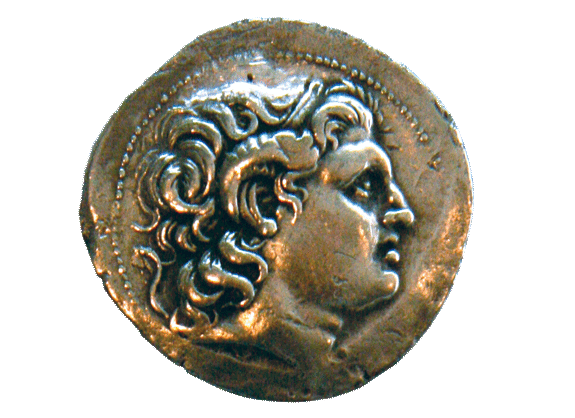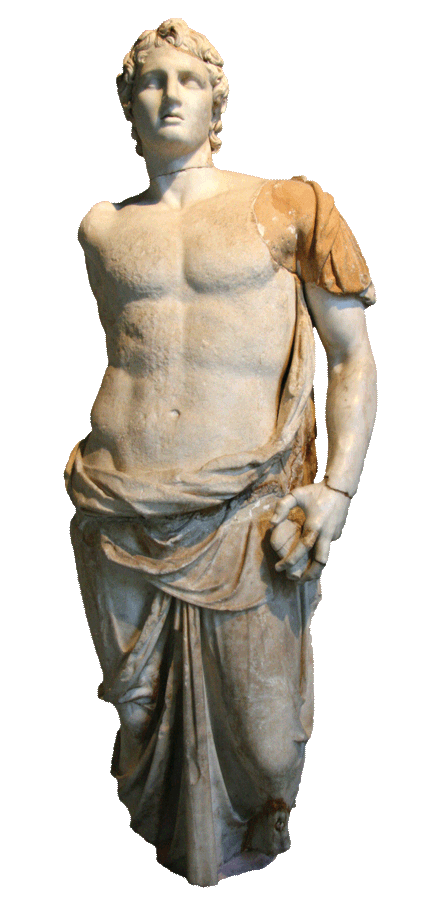Between the Testaments
The time between the Old and the New Testaments covers roughly four hundred years, beginning in about 430 BC.1 During this period, the world’s power shifted from Asia to Europe. The Persian Empire collapsed under the attacks of the Macedonians, and the Greek Empire eventually gave way to Roman rule.
The Persian period extends from the end of the Old Testament story to 334 BC. In 539 BC Cyrus of Persia conquered Babylon and began to rule over its territories. Cyrus’s empire spread from Greece to India and from the Caucasus to Egypt, during which time Cyrus allowed the Jews to return to Judea and rebuild their temple and city. The Persian rule of Palestine was generally tolerant. During the fourth century BC, Cyrus’s Persian Empire began to crumble, and European power moved into Palestine.
Philip II of Macedon began a new period in the history of Palestine after uniting the city-states of Greece and Macedonia. Philip’s son, Alexander III (“the Great”), defeated Persia in battle, thus combining Egypt, Palestine, Syria, Asia Minor, Greece, and the Persian territory into an extensive empire. The expanded empire was administered following principles of the Greek polis (city-state), with Greece forming new cities and reshaping existing cities. This process of blending Greek culture with native cultures (known as “Hellenization”) continued throughout the intertestamental period.
After Alexander’s death in 323 BC, his empire was divided among his four generals, the Diadochi (“successors”). Most significant to Palestine were Ptolemy I, whose forces held Egypt and North Africa, and Seleucus Nicator (Seleucus I), whose armies secured Syria, Asia Minor, and Babylonia.

Silver coin with the head of Alexander the Great
The Ptolemaic kings governed Palestine from 323 to 198 BC, allowing the Jews to govern themselves and observe their religious customs. In 198 BC, Antiochus III, ruler of the Seleucids, defeated his Ptolemaic rival and annexed Palestine, continuing the Ptolemies’ policy of religious toleration.
In 175 BC, however, Antiochus IV “Epiphanes” (“the manifest god”) came to power, which began the most significant crisis of Second Temple Judaism before Pompey’s invasion and the onset of Roman rule. Along with others in Jerusalem, Antiochus IV supported the radical Hellenization of Jerusalem. He outlawed Judaism, made pagan worship practices compulsory, and brought in foreign mercenaries to maintain order. An altar to the Syrian god Zeus was erected in the temple. By 167 BC, animals forbidden by Mosaic law were sacrificed on the altar, and prostitution was sanctioned in the temple precincts.
The Hasmoneans, a priestly family named after one of their ancestors and consisting of a man named Mattathias and his five sons, raised a revolt that proved successful after an intense struggle (this family was also called Maccabees, from the nickname “Maccabeus” or “the Hammer,” which was given to Judas, one of Mattathias’s sons). Judas Maccabeus and his revolutionaries defeated the Syrians and recaptured the temple in 164 BC. However, the Hasmonean dynasty deteriorated through weak leadership because the political aims of the Hasmoneans alienated many former supporters, including the Hasideans, who split into the Pharisees and the Essenes. The aristocratic supporters of the Hasmonean priest-kings became the Sadducees. Toward the end of the Hasmonean dynasty the Pharisees dominated the country. In 67 BC, a war broke out between two brothers, Hyracanus II and Aristobulus II, each fighting for the title of high priest and king. Both appealed to Rome to settle the issue, effectively inviting the Roman general Pompey to conquer Jerusalem in 63 BC and bring Judea under direct Roman control.

Alexander the Great fulfills the prophecy of Daniel 8.
Under its emperors, Roman culture remained largely Hellenistic, with the distinctive Roman contributions of central administration and the promise of peace through superior force. Pompey, the Roman general who seized control of Jerusalem and the surrounding area, delegated much of the former Hasmonean territory to the nearby Roman governor of Syria. After conferring the title of high priest on Hyracanus II, Pompey appointed an Idumean (a descendant of Esau) named Antipater and his sons, Phasel and Herod, as governors of Judea and Galilee. Hyracanus II’s years of limited religious rule ended with defeat by the Parthians. In turn, Rome defeated the Parthians and then confirmed Herod (“the Great”) as ruler in 37 BC.
During these early years of Roman control, Rome was generally quite tolerant of Judaism. In addition, Roman power provided a period of relative peace for the region. However, throughout the period of Roman domination, sporadic Jewish resistance movements emerged. Herod was an efficient ruler and a clever politician who kept Rome satisfied. Among his many building projects, perhaps his greatest contribution was the expansion and beautification of the temple in Jerusalem. Herod is also known for promoting Hellenistic (Greek) culture throughout his realm. Herod’s reign was filled with internal political intrigue, plots, murders, wars, and brutality until his death in 4 BC. Lacking their father’s ability and ambition, Herod’s sons ruled over separate parts of Palestine into the New Testament period.
1. Much of this article is taken from James L. Johns’s article on the intertestamental period in the Baker Illustrated Bible Handbook (Grand Rapids: Baker Books, 2011), 465–68.